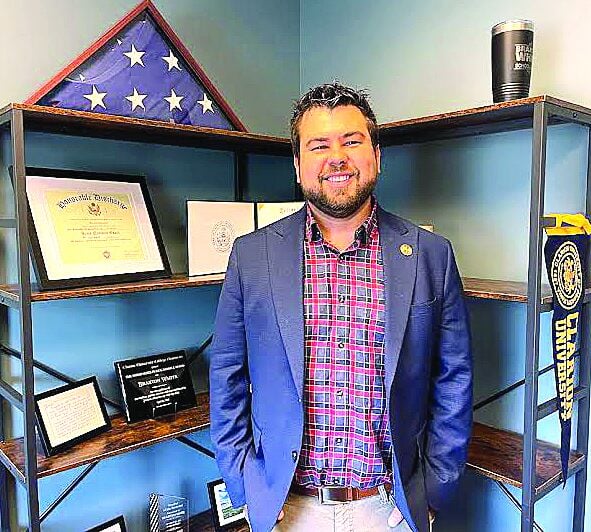Report on the Link Between Special Educational Needs, School Exclusion, and Youth Criminal Justice

Introduction
Recent research from the University of Exeter highlights a critical connection between children with Special Educational Needs (SEN), school exclusions, and early criminal convictions. This report emphasizes the importance of addressing these issues in alignment with the United Nations Sustainable Development Goals (SDGs), particularly SDG 4 (Quality Education), SDG 10 (Reduced Inequalities), and SDG 16 (Peace, Justice, and Strong Institutions).
Study Overview
The study, published in Forensic Science International: Mind and Law and funded by the UKRI Economic and Social Research Council (ESRC), investigated the “school to prison pipeline.” It focused on how SEN, including neurodisabilities such as autism, acquired brain injury, ADHD, dyslexia, and dyspraxia, may contribute to over-representation in youth justice systems.
- Data from 3,000 adult prisoners were analyzed.
- Findings showed prisoners with poorer neurodisability screening scores were more likely to have experienced school exclusion.
- Increased frequency of school exclusions correlated with younger ages at first criminal conviction.
Key Findings
- Permanent school exclusions often lead to education in Pupil Referral Units (PRUs), alternative provisions for children unable to attend mainstream schools.
- Prisoners who attended PRUs were convicted on average six years earlier than those never excluded, highlighting a significant impact on life trajectories.
- Children with SEN constitute 15% of the school population but represent 47% of permanent exclusions and 45% of fixed-term exclusions in the UK.
- School exclusions have been rising since 2012/13, correlating with negative psychosocial outcomes such as poorer mental health, unemployment, and homelessness.
Implications for Sustainable Development Goals
- SDG 4 (Quality Education): The findings stress the need for inclusive education systems that support children with SEN to prevent exclusion and promote lifelong learning opportunities.
- SDG 10 (Reduced Inequalities): Addressing the disproportionate exclusion of children with SEN is essential to reducing inequalities in education and justice outcomes.
- SDG 16 (Peace, Justice, and Strong Institutions): Early criminal justice contact linked to school exclusion undermines peaceful and inclusive societies; interventions are needed to break this cycle.
‘Double Disadvantage’: Neurodevelopmental Delay and Poverty
A second study published in Longitudinal and Life Course Studies examined the combined effects of neurodevelopmental delay and poverty on youth criminal justice contact. Analyzing data from 519,920 children born in 2001/02, the research found:
- Children with neurodevelopmental delays and living in poverty (eligible for free school meals) at ages four or five face a “double disadvantage.”
- Both factors independently increase the risk of criminal justice involvement by age 15.
- Together, they significantly heighten vulnerability to early criminalisation.
Recommendations for Policy and Practice
- Enhance SEN support in mainstream schools to improve educational engagement and reduce exclusions.
- Increase resources and training for teachers to better support children with neurodevelopmental conditions.
- Implement policies aimed at reducing child poverty to mitigate its compounding effect on criminal justice risk.
- Promote longitudinal research to establish causal links between school exclusion, neurodisability, poverty, and criminal justice involvement.
Case Study: Breaking the School to Prison Pipeline
David Breakspear’s experience illustrates the human impact of the school to prison pipeline. Diagnosed with ADHD at age 40 after years of exclusion and criminal justice contact, David’s story underscores the need for early identification and support for neurodiverse children.
- David faced multiple school exclusions and early arrests starting at age 14.
- His lack of support contributed to repeated incarcerations into adulthood.
- After diagnosis and personal development efforts in prison, David became a mentor and advocate for neurodiversity and young offenders.
- He emphasizes the necessity of proper behavioural support to prevent criminal justice involvement and close the school to prison pipeline.
Conclusion
The research highlights a pressing need to align educational and social policies with the Sustainable Development Goals to ensure inclusive, equitable quality education and reduce inequalities. Addressing the school to prison pipeline through targeted SEN support, poverty reduction, and systemic reforms is vital to improving life outcomes for vulnerable children and fostering just, peaceful societies.
References
- School to prison pipelines: Associations between school exclusion, neurodisability and age of first conviction in male prisoners, Forensic Science International: Mind and Law.
- Neurodevelopmental profile and poverty in primary school confer a ‘double disadvantage’ in risk of criminal justice system contact by the age of 16: A national prospective cohort study, Longitudinal and Life Course Studies.
1. Sustainable Development Goals (SDGs) Addressed or Connected
- SDG 4: Quality Education – The article discusses the exclusion of children with special educational needs (SEN) from schools and the need for improved educational support and inclusion.
- SDG 10: Reduced Inequalities – The article highlights the disproportionate exclusion and criminalisation of children with SEN and those living in poverty, emphasizing social and educational inequalities.
- SDG 16: Peace, Justice and Strong Institutions – The connection between school exclusion and early criminal convictions relates to justice system involvement and the need to reduce youth crime.
- SDG 1: No Poverty – Poverty is identified as a risk factor that, combined with neurodevelopmental delays, increases vulnerability to criminal justice contact.
- SDG 3: Good Health and Well-being – The article refers to mental health outcomes and neurodisabilities, which are linked to educational exclusion and criminalisation.
2. Specific Targets Under Those SDGs Identified
- SDG 4: Quality Education
- Target 4.1: Ensure that all girls and boys complete free, equitable and quality primary and secondary education.
- Target 4.5: Eliminate gender disparities and ensure equal access to all levels of education and vocational training for vulnerable populations, including children with disabilities.
- Target 4.a: Build and upgrade education facilities that are child, disability and gender sensitive.
- SDG 10: Reduced Inequalities
- Target 10.2: Empower and promote the social, economic and political inclusion of all, irrespective of disability or socio-economic status.
- SDG 16: Peace, Justice and Strong Institutions
- Target 16.3: Promote the rule of law at the national and international levels and ensure equal access to justice for all.
- Target 16.2: End abuse, exploitation, trafficking and all forms of violence against and torture of children.
- SDG 1: No Poverty
- Target 1.2: Reduce at least by half the proportion of men, women and children living in poverty in all its dimensions according to national definitions.
- SDG 3: Good Health and Well-being
- Target 3.4: Promote mental health and well-being.
3. Indicators Mentioned or Implied to Measure Progress
- School Exclusion Rates – The article provides data on fixed-term and permanent school exclusions, especially among children with SEN (e.g., 47% of permanent exclusions are children with SEN).
- Age of First Criminal Conviction – The study links earlier age of first conviction with school exclusions and neurodisability, which can be tracked over time.
- Proportion of Children with SEN in School Population – The article notes that children with SEN represent 15% of the school population but a higher proportion of exclusions.
- Rates of Youth Criminal Justice System Contact – The article discusses the likelihood of children with neurodevelopmental delays and poverty entering the criminal justice system by age 15 or 16.
- Access to SEN Support and Resources in Schools – Implied as a measure to assess improvements in educational inclusion and support.
- Child Poverty Rates – Poverty is a key factor linked to criminal justice contact, so measuring poverty rates among children is relevant.
- Mental Health Outcomes – The article references poorer mental health associated with school exclusion, which can be monitored as an indicator.
4. Table of SDGs, Targets and Indicators
| SDGs | Targets | Indicators |
|---|---|---|
| SDG 4: Quality Education |
|
|
| SDG 10: Reduced Inequalities |
|
|
| SDG 16: Peace, Justice and Strong Institutions |
|
|
| SDG 1: No Poverty |
|
|
| SDG 3: Good Health and Well-being |
|
|
Source: news.exeter.ac.uk







